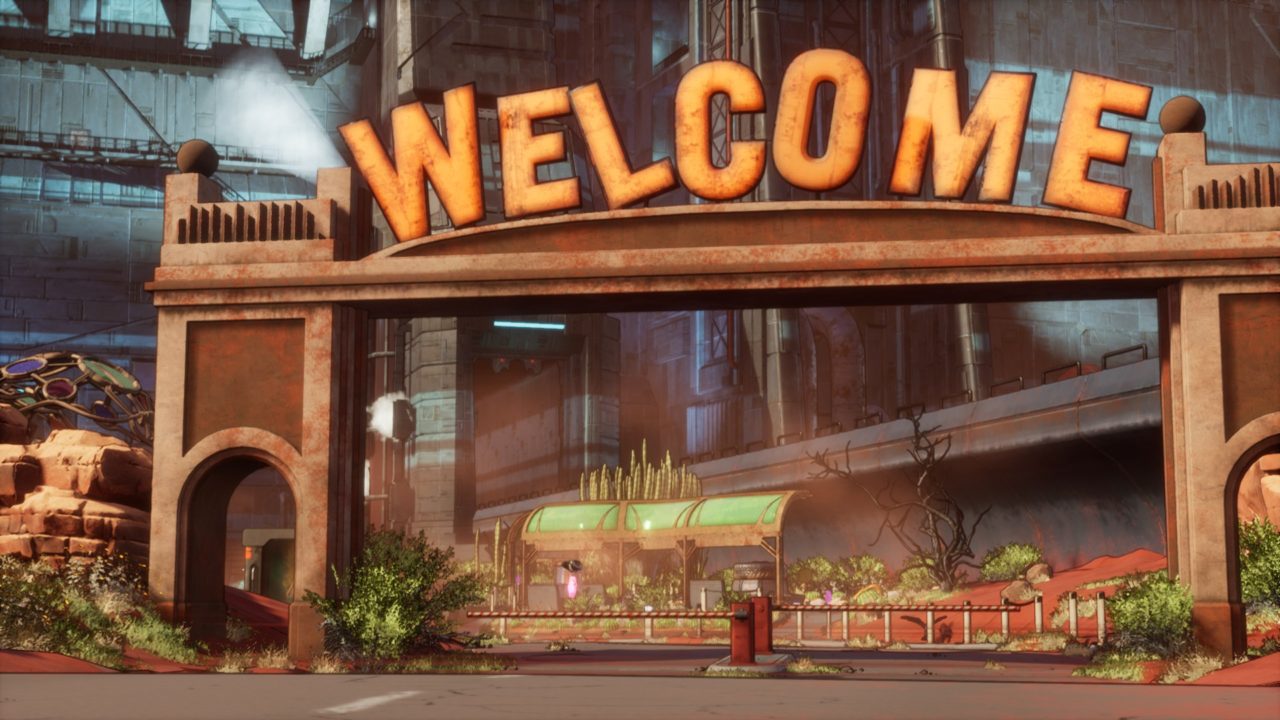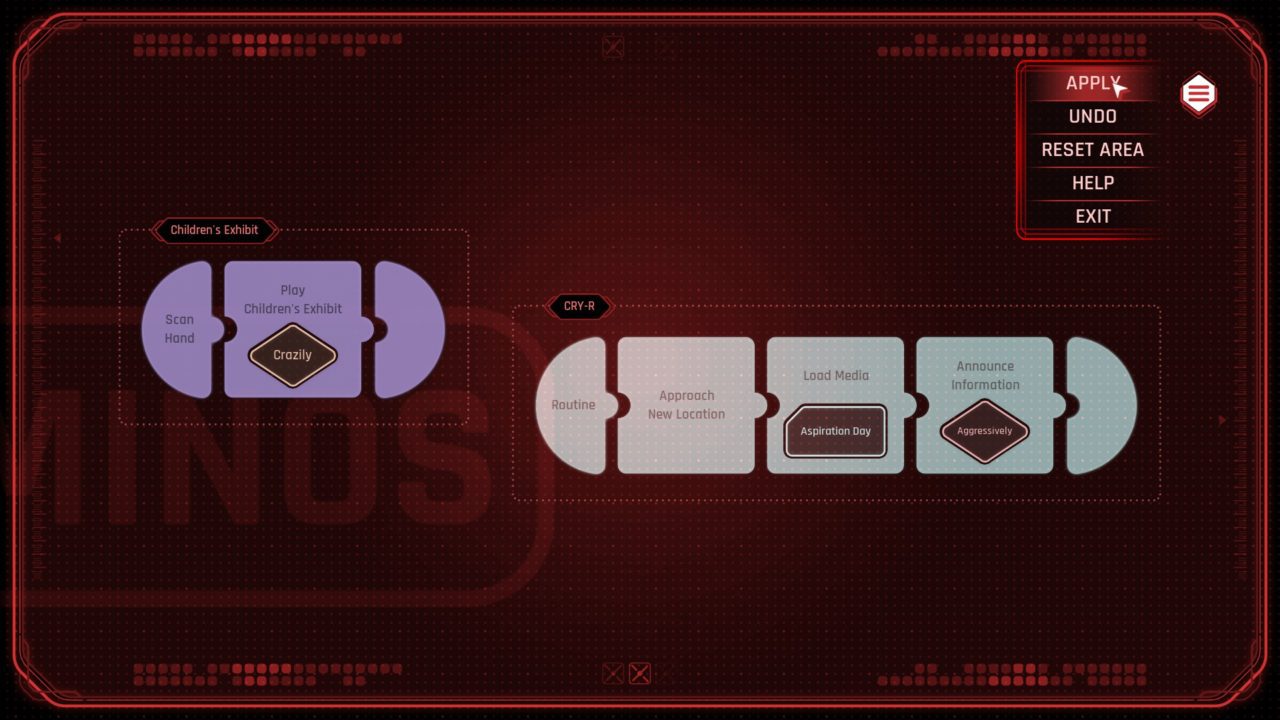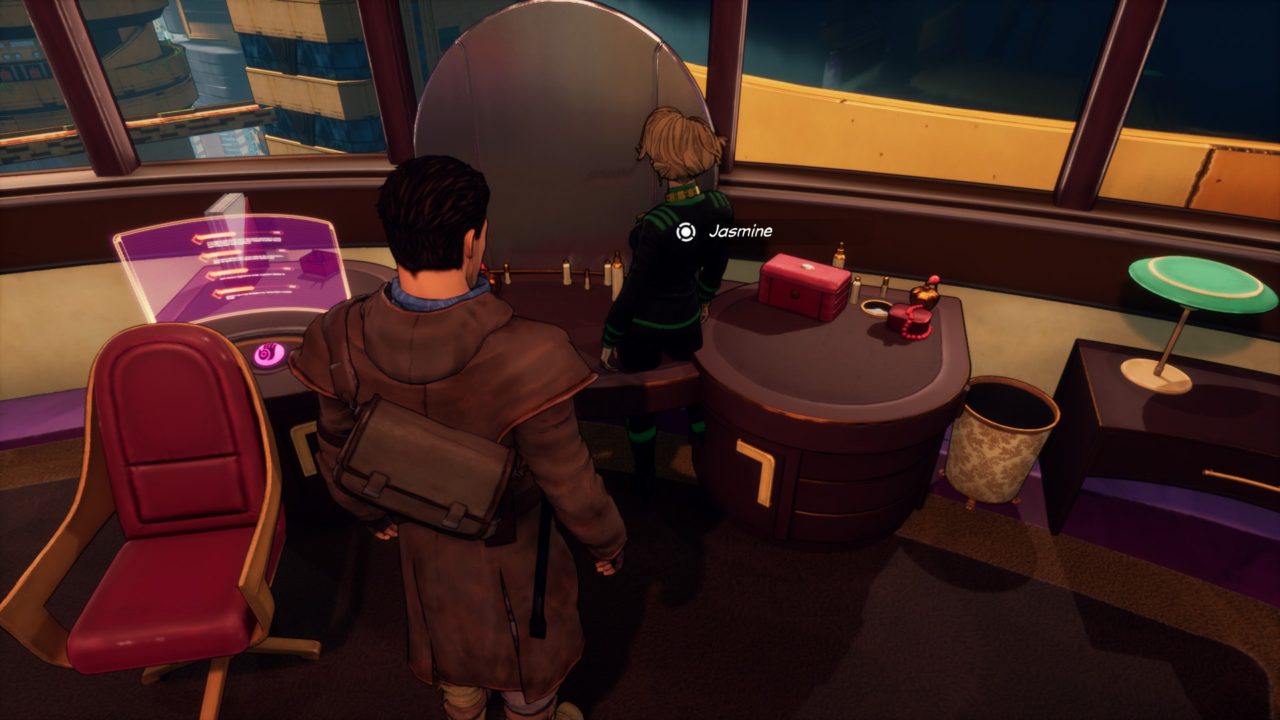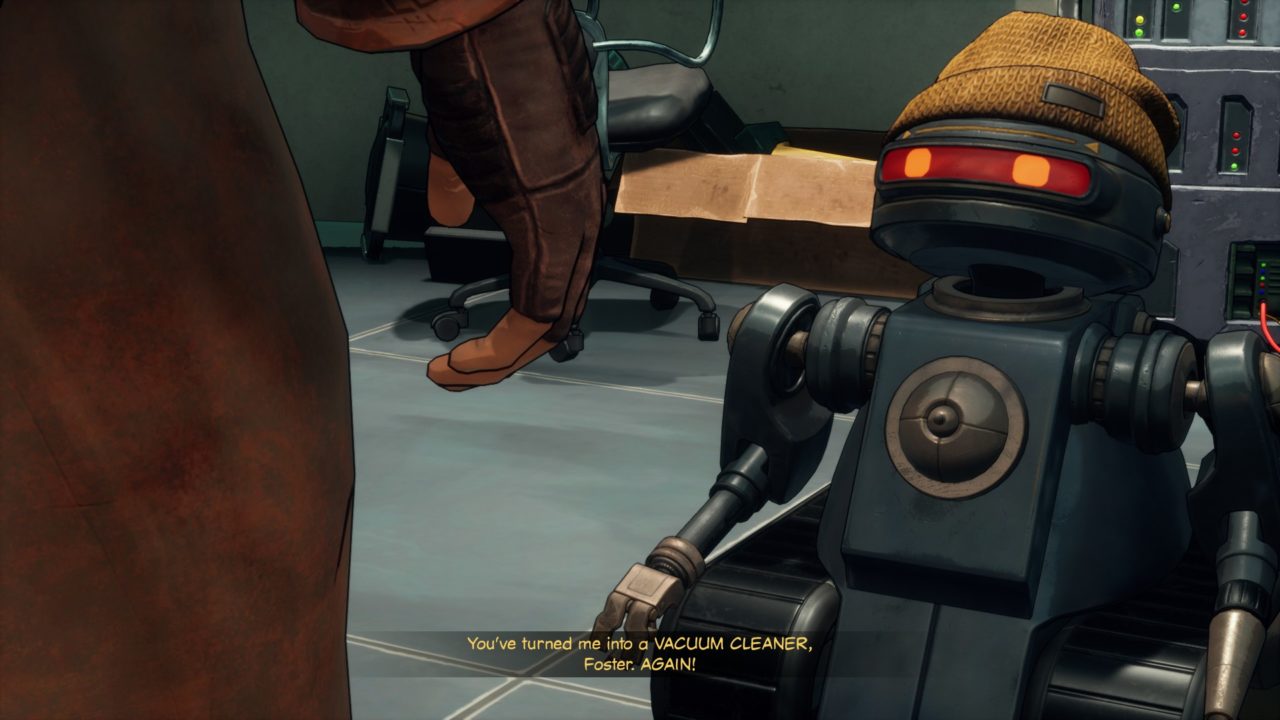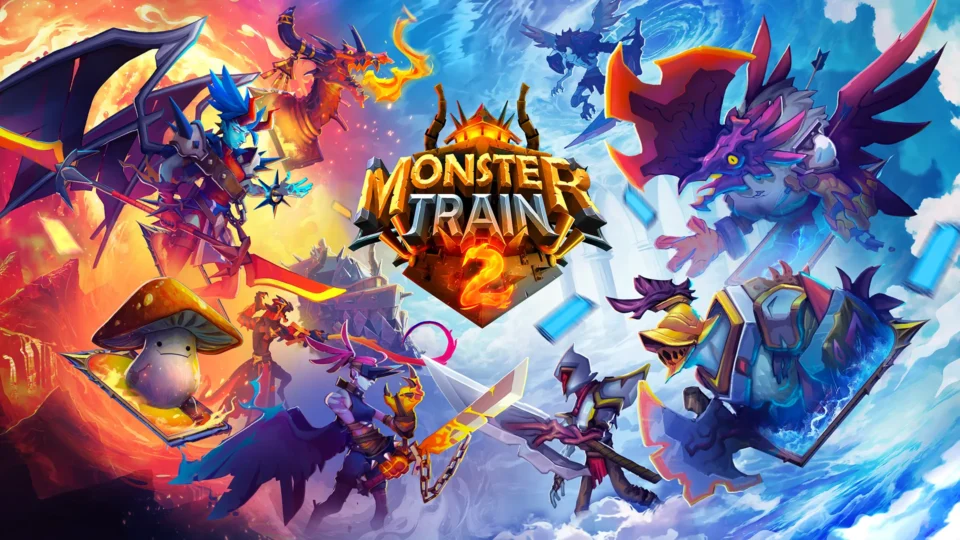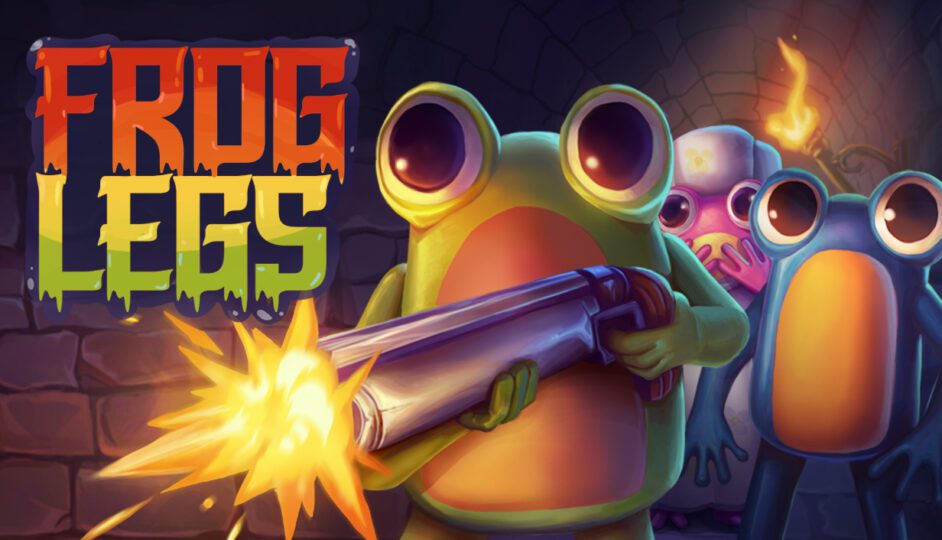Beyond a Steel Sky has kept us waiting for 26 long years, using that time to whip up a frenzied cult following for the 1994 original, Beneath a Steel Sky. Once again, we find ourselves inhabiting Robert Foster’s sandy shoes in a gorgeous game with plenty of twists – but one that can’t quite support itself under its own weight.
And what a weight it was; the original game encapsulated everything that was great about the early cyberpunk aesthetic, the point-and-click genre at its zenith, and that unmistakable 90s ability to create uniquely quirky games for a mass audience. Although you absolutely don’t need to have played the original to understand the plot of this sequel, I would certainly recommend it. There is so much life and vitality in its storyline, a great deal of texture and complexity in its characters. The stakes are higher than your usual P&C game, as there is little hand-holding, and Foster can die during a botched puzzle. When making the sequel then, Revolution had a whole legacy behind them – a world ready-built, and a fanbase ready to pick up where they started.
From the very beginning, Beyond a Steel Sky starts to pay affectionate homage to its source material. We are presented with a comic book retelling of the first game: how Foster and Joey came to save Union City from LINC, how the Unions and Corporations work, and Foster’s last words to Joey – to keep the people “happy”. Incredibly, this comic style is maintained throughout – a-la Telltale – presenting us with a full 3D world. Revolution experimented with this concept a little in the Broken Sword days, combining point-and-click with a fully immersive setting. This combination somehow makes the overall experience feel smoother, richer, and allows puzzles to be viewed in a different light.
Aesthetically then, BaSS is a beautiful example of cell-shaded cartoon graphics working narrative wonders. It manages to be vibrant and subtle all at the same time, pushing exaggerated sci-fi tropes and cleverly nestling away little details that wait patiently to be uncovered. The characters are limited in their actions, but there’s a little more flexibility considering this isn’t an RPG – their animations are appealing and clearly crafted with love. Occasional panoramic sweeping shots of the city are a welcome display of how close attention has been paid to capturing the spirit of the original. Although very few of the NPCs are actually able to talk with you specifically, they will often converse between themselves, even using some of the technology available.
Maneuvering with full control certainly has its merits. There are plenty of pointless but entertaining things to look at and interact with – such as hacking a vending machine so that attacking it with a crowbar gives you free stuff sans alarm – and the point-and-click system is implemented really well. There is no irritating inventory fiddling, and you can see which items are worth trying before you get stuck in a hapless cycle of combining everything you see with a sandwich “just in case”. Foster can interact with most important people and items in this mode, chatting to locals to build an idea of the new Union City, and solving basic puzzles. Early on in the game, a new mode will also be opened up to you – your scanner.
The scanner is a nicely done twist, blurring that line just a little more between RPG and P&C. Most machines, d-RYDs (the in-game term for droids), and electrical items can be “hacked” using the scanner; a process that involves simple logic trees. There’s nothing too challenging here, but the ability to swap around parts of a d-RYD’s logical thinking process can lead to some pretty interesting possibilities. The implementation of the scanner is a positive one, and you use it enough to stop it from becoming a mere gimmick.
Unfortunately, it sometimes feels as if someone is using one of these scanners on the game as you try to play it. This is where I will, sadly, have to be critical of this game I was so geared up to lavish praise upon. Beyond a Steel Sky just doesn’t always feel… finished. Regardless of how rich an atmosphere is, how many options you have open to you, if a game cripples itself with bugs and errors it can only suck you right out of the immersion. To be fair to Revolution, a few bugs here or there would be fine at this stage. Nothing that can’t be patched out. But they are near-constant and often intrusive. Entire puzzles can be rendered “unsolvable”, and this is not always set straight by a reload.
At one point I was chatting to a certain plot-crucial character, trying to get the next questline to open up, and she turned around and got herself lodged in a table. It was entertaining, for sure, but it did mean the rest of the game was closed off to me until I reverted to an old save. And this was far from an isolated occurrence. Sometimes things refused to spawn, or people went missing, or the camera went inside Foster’s body during a cutscene.
Another thing affected by these bugs is pathing – which struggles consistently throughout the game. Once an action is initiated, the characters will adhere to a certain path in order to perform it. Which would be fine, except the paths are so final that any blockage is a fatal delay. This means that Foster has to be perfectly positioned before the action is initiated, or he can spend an eternity trapped behind a wall, or another citizen. It is honestly frustrating, and makes the pointless-but-fun interactions far more trouble than they’re worth sometimes.
That being said, it is always worth checking up on people and things when possible (which, admittedly, further adds to the frustration at times). The script is a wonderful blend between genuinely compelling and lighthearted, lampooning sci-fi tropes as much as fully investing in them. The characters are a joy to listen to, they manage to be warm and funny, with even minor characters having fully-fledged personalities. Revolution has always done well historically in this regard, it is just a shame so many of these interactions have the potential to become irritating due to bugs.
The world-building is also a little confused. A brilliant system of social “climbers” has been developed where “lower is better”, trying to manufacture aspiration “to the bottom”. This is a great idea, and is centred around the logical conclusion of a machine trying to make everyone happy at any cost – but often falls short when implemented in the game. People still talk as though the traditional value system is in place sometimes, and although “social climbing” seems to be a very present issue – no one around you will notice when you turn up wearing a badge designating you as one of the best – a badge you clearly didn’t have earlier.
Although this seems like a minor complaint, the world of BaSS is so vast and so detailed that it is an occasional disappointment to come across such glaring inconsistencies. There are plenty of references to the original, and it’s great to see where Union City has gone from there, but it doesn’t always feel like it takes itself seriously enough.
The puzzles manage to hold their end up, crossing that valley between logical and slightly ridiculous. There is, for example, more than one puzzle that requires you to throw mini sausages around the place. It’s great, it brings character and vitality to the script, and makes you think outside the box. My only worry here is that for seasoned point-and-click fans, they simply aren’t challenging enough. The game moves at a very slow pace, and sometimes the puzzles can seem a little ham-fisted – like forcing the player to read things in a certain order, even if they’ve read them before. This doesn’t always present itself as an obvious issue, and can lead to some bottlenecking later on.
It feels sad to have been so negative about Beyond a Steel Sky. The main feeling you get from sinking into this world is that those who worked on it had a genuine love for the source material and to be fair to them, they have created a warm and engaging world. The storyline is fun, the characters are beautifully portrayed and developed, the puzzles make sense (most of the time), and its great to be back in Union City. This game would warrant some re-reviews later on down the line, once they iron out some of the bugs, as unfortunately enough of them are game-breaking, or at the very least break the immersion. Despite all this, I would still recommend this game to fans of the original, and even new players. Just remember to save after every puzzle, you never know when someone is going to walk into a table.


